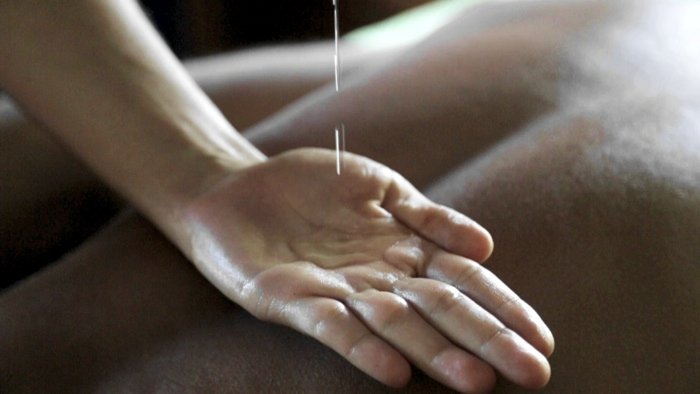By Jen Kilgarry
If you have decided to take the plunge into health and wellness by signing up for a yoga retreat or pampering spa experience at Blue Osa Yoga Retreat & Spa, chance are, you are already well acquainted with the human need to take a pause from the hustle and bustle of everyday life; to reconnect body, mind and spirit.
The scientific community, too, is waking up to the important role that so-called ‘alternative therapies’ like yoga and Reiki, can play in our health and well-being. Yoga, in particular, has been the subject of much research of late, with latest findings indicating that is a useful adjunct in the treatment of everything from breast cancer to Post-traumatic Stress Disorder and, anxiety, depression and addiction. Primarily, this is owing to yoga’s ability to control cortisol (stress hormone) levels, but also to lower our heart rate and blood pressure, help deal with pain (chronic back pain and migraines in particular), and aid in combating obesity. Reiki is another treatment that is only just beginning to make waves in the scientific community, with new findings indicating that it, too, is of great use in combating everything from anxiety to pain and depression.
What is Reiki?
Reiki is a holistic energy healing treatment that transmits natural healing vibrations through the hands of a Reiki practitioner to the recipient’s body. It is based on the principle that we all have an invisible life force energy flowing through us; when our life force energy levels are low or we are suffering from emotional blockage, we are more likely to fall prey to disease or to feel stressed. Reiki is administered by ‘laying on hands’ and the results of a session are often described as feeling a ‘glowing radiance’.
The purpose of Reiki is to reduce stress and pain, help imbue a sense of tranquillity. Reiki can charge our energy field with positive energy, shorten healing times, balance energies, help create positivity and support a plethora of traditional therapies. According to The International Center for Reiki Training, some four million people worldwide have undertaken at least one out of three possible levels of Reiki training.
In the US, Reiki is used in over 800 hospitals to speed up healing and ease patients’ pain. Interestingly, during a Reiki session, the practitioner’s own energy is never depleted; on the contrary, giving a treatment increases one’s own energy and promotes feelings of love and positivity. Because it enhances a positive mental outlook and reduces stress, Reiki is often a chosen therapy for those who are undergoing difficult life processes, including illness, personal loss and rehabilitation for addiction to substances or alcohol. Recovering addicts, in particular, are often hounded by feelings of failure and worry; their life force energy is often low or blocked and their body, vulnerable to powerful cravings and temptations. By allowing recipients to feel positive about life and enabling them to overcome stress and pain, Reiki is, therefore, an ideal treatment to pursue for those undergoing personal challenges, but also for those who simply wish to achieve greater balance. Reiki is currently offered not only in hospitals but in many rehabilitation clinics, hospices and private clinics.
The Benefits of Reiki
What does science have to say on the matter? Lately, a lot, it seems, and the findings are refreshingly positive.
Reiki vs Stress: In a study carried out by Baldwin et al in 2008, it was demonstrated that Reiki reduced stress in animals. In 2011, meanwhile, Diaz-Rodriguez et al carried out a study on nurses suffering from ‘burn out syndrome’ and found that a significant relaxation response ensued from Reiki treatment. In the same year, Friedman et al showed that patients suffering from acute coronary syndrome experienced a significant relaxation effect after receiving Reiki treatment from nurses.
Reiki has also been found to be helpful in treating mental conditions such as depression. In 2004, Shore found that those who had received Reiki treatment for six weeks revealed lower levels of stress and depression, while experiencing a more positive outlook on life. In one of the most interesting yet small studies on Reiki (Motz, 1998), heart surgery patients who received Reiki were able to stave off typical post-operative depression. Other studies have focused on pain; Reiki has been found (Weze et al, 2005) to aid in reducing pain and stress; another study carried out in 1998 showed its positive effect in relieving pain, depression and anxiety in patients who were battling cancer. Reiki also helps us get a better night’s sleep, making it an excellent treatment in conditions such as depression and rehabilitation, where sleep can be very a very difficult pursuit.
It is no wonder that Reiki is proving so popular among members of the scientific community, or that it is being embraced in so many forward-looking medical centers and spas. It is a deeply useful, cost-effective and natural way to feel better, more balanced and more positive about life.
Book a Reiki session with Laura at the Blue Osa Eco-Spa during your next retreat.






